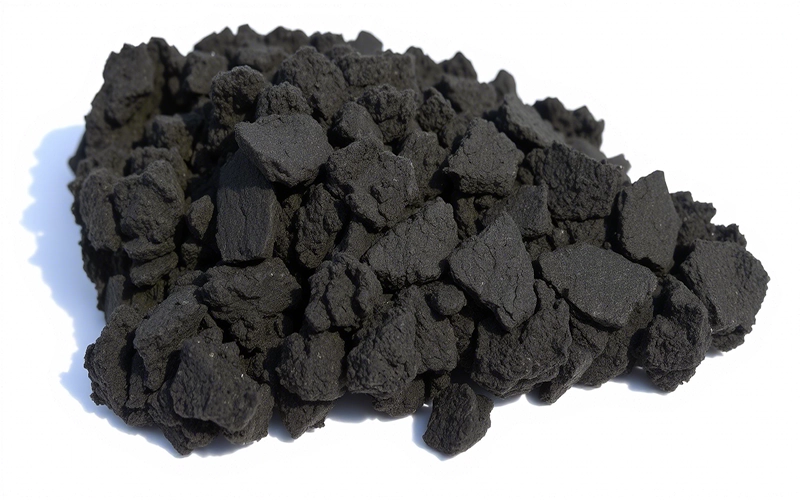Raw petroleum coke (also known as green petroleum coke or simply “green coke”) is a carbon-rich solid material that is derived as a byproduct from the oil refining process. Specifically, it is produced during the thermal cracking of heavy petroleum residues in units known as delayed cokers. While the term “green” refers to its unprocessed state, not its colour—raw petroleum coke is distinct from the calcined and graphitised forms used in more specialised industrial applications.
Raw petroleum coke typically contains 80-90% carbon along with varying amounts of volatile matter, moisture, sulfur, nitrogen, and trace metals. Because it has not yet undergone calcination (a high-temperature treatment process), it retains a relatively high level of volatile compounds. Its physical characteristics, such as hardness and density, depend on the feedstock used and the conditions of the coking process.
There are two general types of raw petroleum coke: sponge coke and needle coke. Sponge coke, which has a porous, sponge-like appearance, is commonly used as a fuel source in power plants, cement kilns, and industrial boilers. It offers a high heating value, making it a cost-effective and energy-efficient substitute for coal or other fossil fuels. However, sponge coke often contains high sulfur levels, which can pose environmental challenges unless emissions are carefully managed.
Needle coke, on the other hand, is a premium grade of raw petroleum coke with a dense, needle-like structure. It is primarily used in the production of graphite electrodes for electric arc furnaces in steelmaking. Due to its low impurity content and excellent structural integrity, needle coke is one of the most valuable forms of petroleum coke.
Although raw petroleum coke has limited applications in its natural state, it serves as the feedstock for the production of calcined petroleum coke (CPC) and graphitized petroleum coke (GPC). These processed forms are used in aluminum smelting, steel production, battery manufacturing, and other high-tech industries where purity and performance are critical.

As the global demand for energy and industrial materials grows, raw petroleum coke remains a key resource in heavy industries. However, its environmental impact—especially in regard to sulfur and heavy metal content—requires careful management and regulation. Efforts are ongoing to improve refining techniques and develop cleaner combustion technologies.
In conclusion, raw petroleum coke is a versatile byproduct with significant industrial value, serving as both a fuel source and a precursor to advanced carbon materials.
Raw Petroleum Coke (RPC) is the “bottom of the barrel” product of a refinery. This is a solid product. The recent trend of coker units is with a view on resid upgradation and maximization of middle distillates.

| ELEMENT | C | S | Ash | Volatile Matter | Moisture |
|---|---|---|---|---|---|
| PERCENT | 84% Min | 2% Max | 1% Max | 10% Max | 6% Max |